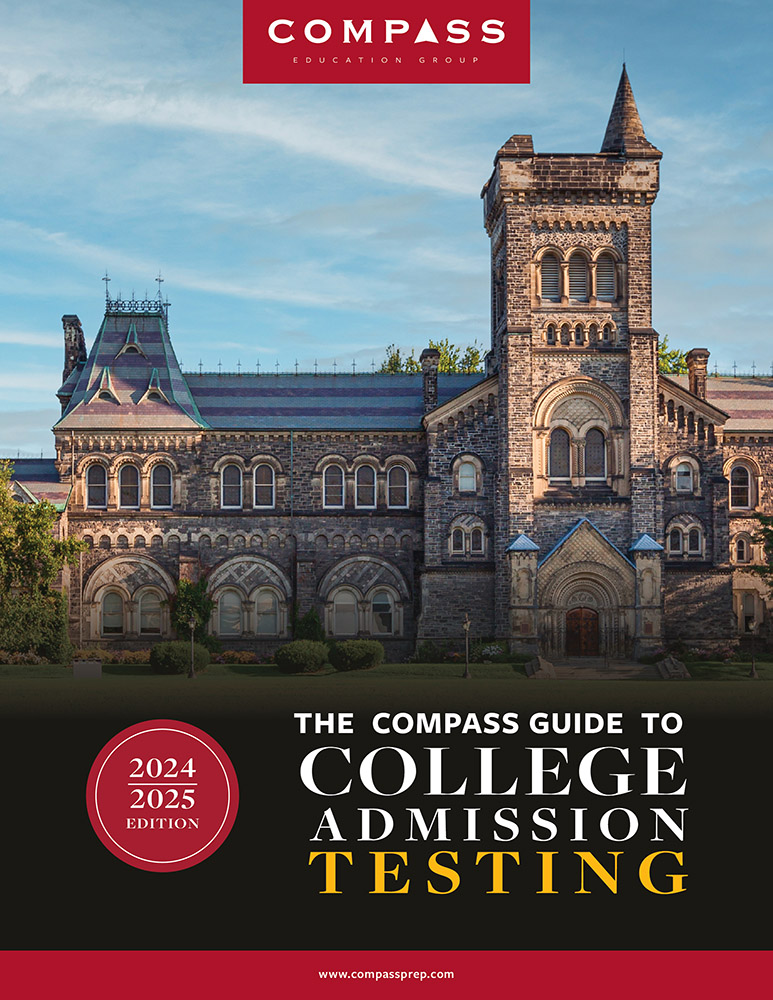
College Board began releasing March SAT scores on Friday, March 22. This post covers how to access and interpret those scores and what to do next.
Access Your Scores
Go to https://studentscores.collegeboard.org/ and log in with your College Board account.
Your latest test will be at the top of the screen.
Review Your Scores
At the top of your report, you’ll see your total score as well as your Reading and Writing and Math scores. Each section is on the familiar scale of 200-800 points. The total is the sum of your section scores on a 400-1600 scale.
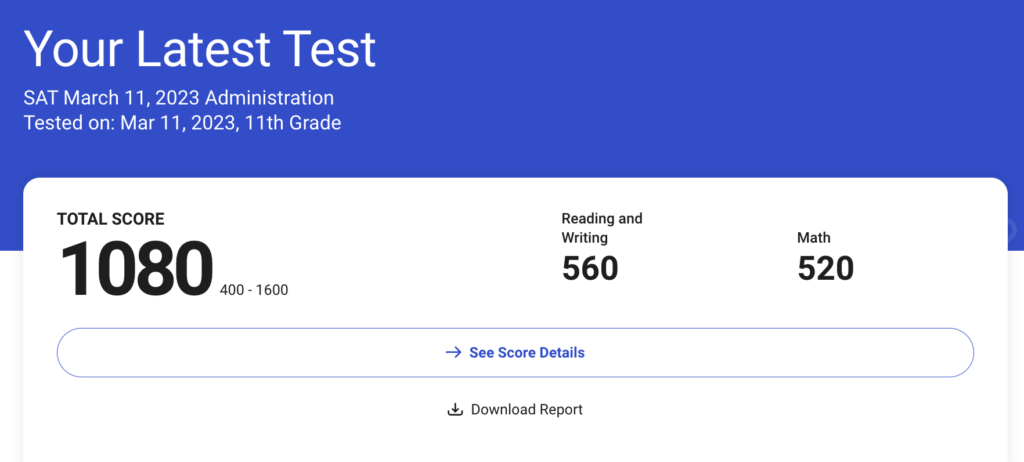
Clicking on See Score Details will take you to a page that presents the same scores again with a note on whether you’ve hit the College Board’s benchmark score for college readiness.
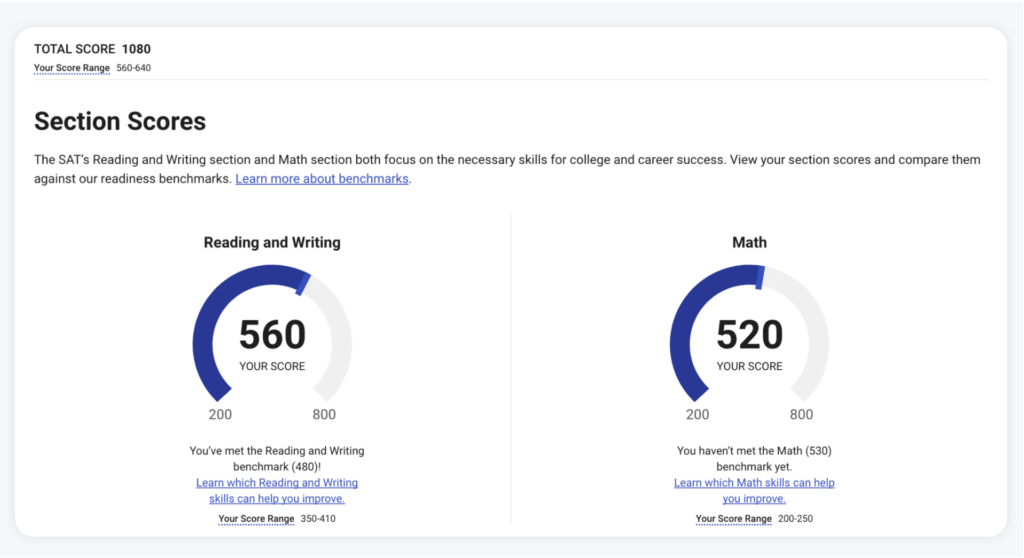
Understand Your Scores in Context
The following section places your total and section scores in the context of your school, district (if you attend a public school), state, country, and all testers.
If only a few students from your school tested at the same time, an average score for the school may not be available.
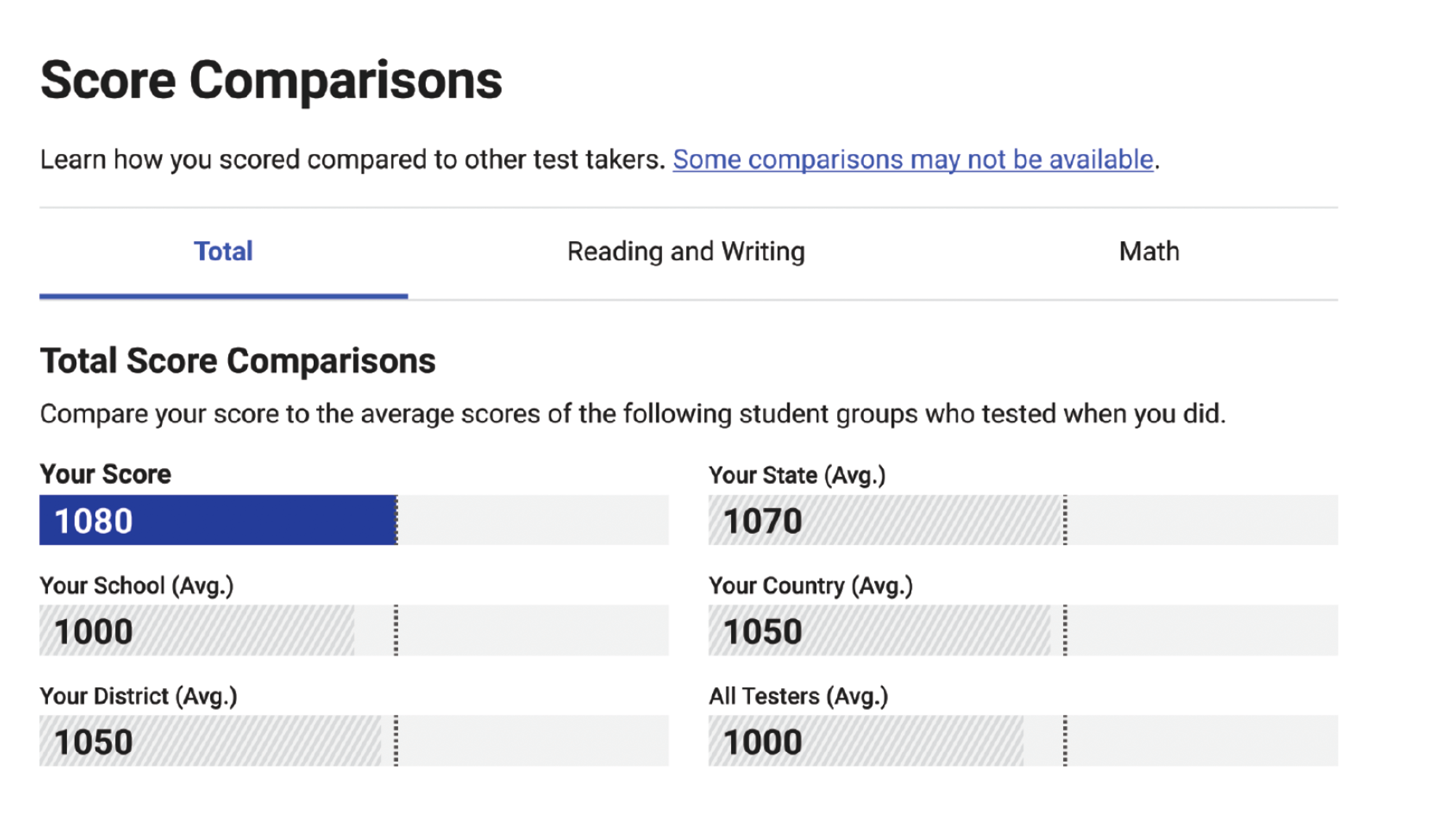
Average scores are just that, averages, so for a better understanding of how your scores compare to those of other students, we recommend scrolling past the score comparisons to the Total Score Percentile Comparisons.
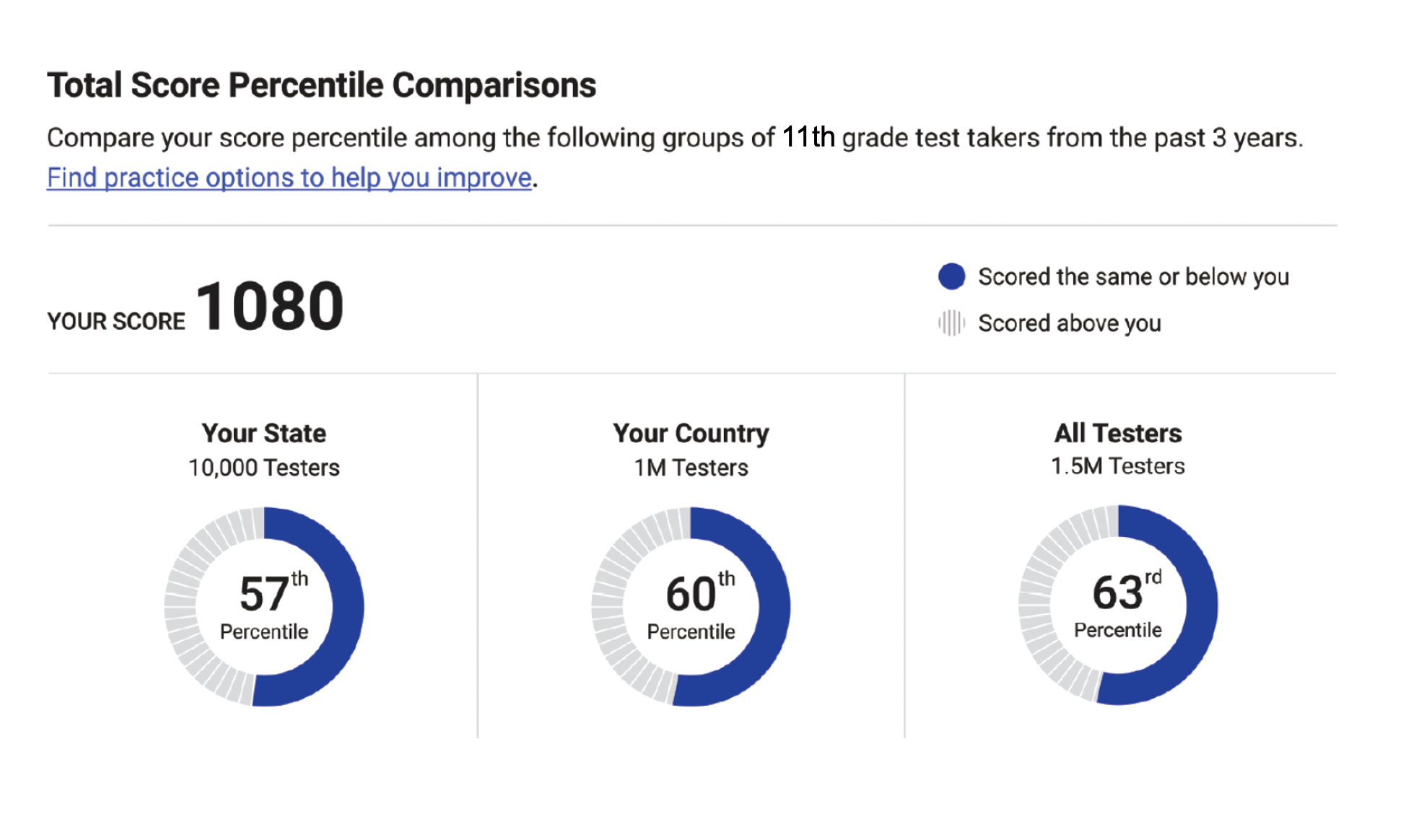
Your percentile tells you what percentage of other test takers are at or below your score. The 63rd percentile example above means that 63% of all 12th grade test-takers across the last three years (“All Testers”) scored at or below your total score. This All Testers percentile is the one that matters the most when thinking about your performance in relation to other college-bound students.
For more on percentiles, read our article on what PSAT and SAT Percentiles mean.
Review Your Performance by Content Areas
The Knowledge and Skills section is the least informative portion of the new digital SAT score report. College Board no longer offers Question and Answer service, so you will not be able to review the questions you missed.
The digital SAT report also does not tell you if you landed on the easier or harder second set of questions for each section. Nor does it tell you how many questions you missed.
Instead you see seven bands that represent score ranges:
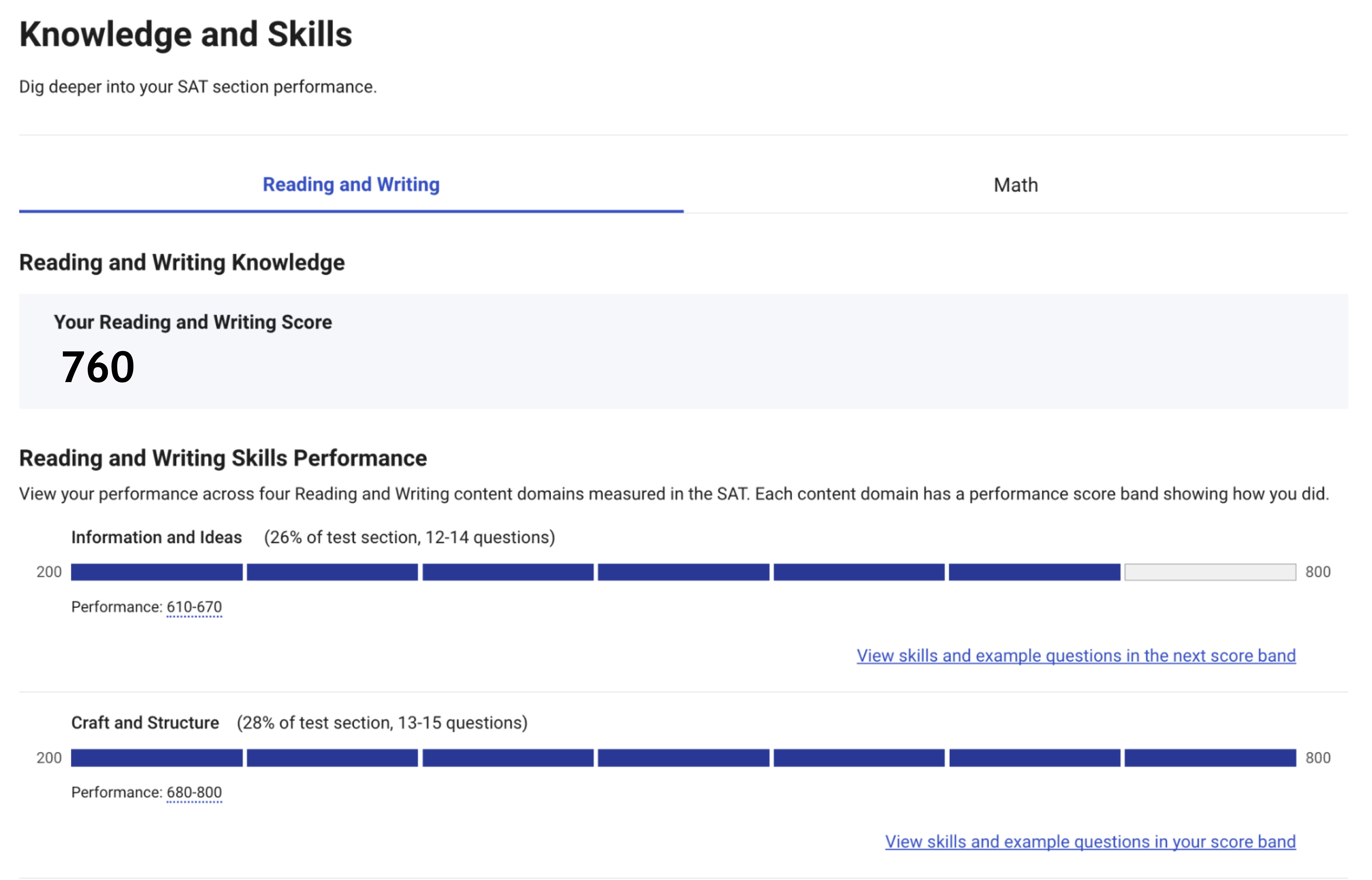
These bands are a little tricky to interpret. It looks like the report is presenting how many questions you missed, but it’s actually presenting score ranges for your performance. You can think of each block as a range of scaled scores. In the Information and Ideas example above, the student has performed in the 610–670 range for that question type, even though their section score is a 760. You can identify areas to improve by looking for Knowledge and Skill performance ranges that are below your overall section score.
The link to view questions below each score band takes you to College Board’s bank of example questions with filters pre-selected. You will get a couple of generic examples but not the actual questions you missed.
If you want to really understand where your content strengths and weaknesses are, we strongly encourage you to take one of our practice tests. The Compass score reports provide far more detailed information and give you access to the questions.
Consider a Retake or Change to the ACT
Now that you’ve reviewed your scores and their context, what should you do with them?
Start by using our college profiles table to compare your scores to the mid-50% range of scores at the colleges that you’re considering applying to. We regularly update our college profiles page with the most recent available data and testing policies. Bear in mind that many of these ranges have been inflated by test optional policies.
Your next step is to decide whether to stick with the scores you have, retake the SAT, or swap to the ACT.
When considering a retake of the SAT, remember that most colleges superscore and many students improve their scores when they retake the test.
You don’t have to stick with the SAT if you aren’t satisfied with your scores. After taking a digital test, some students are preferring to return to the comfort of a paper exam, and are planning to take the ACT.
Even though the form of the questions may be different, much of the underlying knowledge and skills required to do well on the tests are the same. With a little practice, students can apply what they’ve learned for the SAT to the ACT. The time spent preparing for the SAT is not lost if you decide to swap tests.
In general, we advise students to pick a test rather than try to prepare for both at the same time. But it’s not unusual for students to prep for one test and then do a little more prep for the other.
Take a Practice SAT or ACT with Compass
If you want an in-depth look at where you’re struggling with content or if you’re thinking about switching to the ACT, take a practice test with us. We offer in-person proctoring of practice ACTs and digital SATs in locations across the country.
Register and Prepare for Your Next Test
Depending on where you’re located, digital SAT seats on national test dates can be limited. If you’re even thinking about a retake, you should register as soon as possible to make sure you have a seat.
If you’re interested in fully customized one-on-one tutoring, schedule a call with one of our expert Directors to help you build a tutoring plan.
If you prefer to learn in a group, take a look at our classes for a wide variety of schedules.

